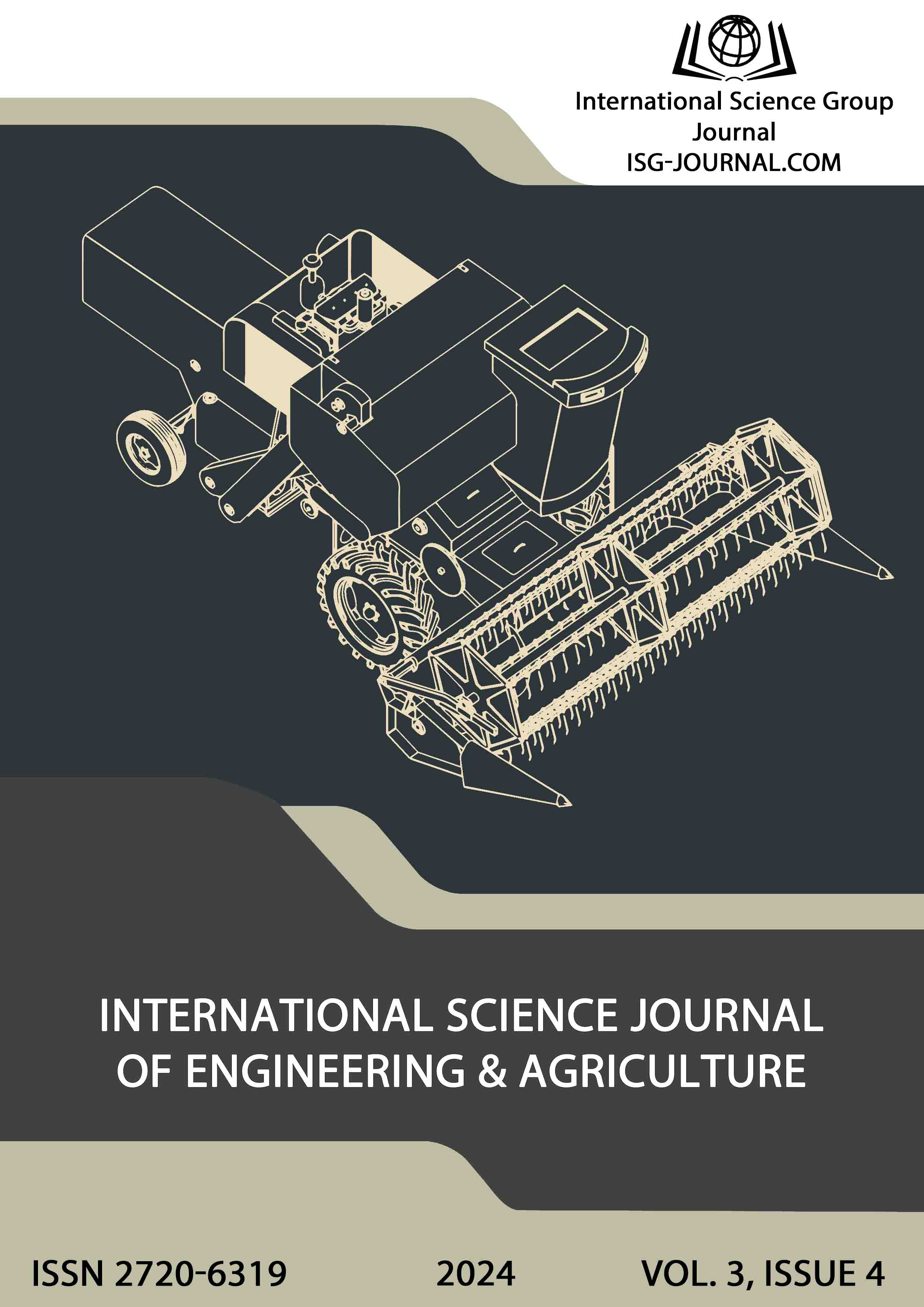Automobile system for predicting the trajectory of surrounding vehicles
DOI:
https://doi.org/10.46299/j.isjea.20240304.04Keywords:
advanced driver assistance system, vehicle-to-vehicle communication, trajectory prediction, machine learning, onboard sensors, random forest, recurrent neural networkAbstract
The improvement of autonomous driving systems and advanced driver assistance systems (ADAS) heavily relies on accurate vehicle trajectory prediction. This research focuses on developing a robust method for predicting the trajectories of surrounding vehicles by leveraging machine learning techniques and neural networks. The study integrates data from onboard sensors, vehicle-to-vehicle (V2V) communication, cameras, LiDAR, and Differential GPS (DGPS) to enhance the accuracy and reliability of trajectory forecasts. Traditional approaches, primarily based on physical models, fall short in complex driving scenarios due to their dependency on uniform motion parameters. The investigated approach addresses these limitations by employing separate algorithms to predict longitudinal and lateral positions, thereby improving safety and reducing collision risks. The implemented algorithms were initially tested on simulated data, confirming their functionality. Future steps involve collecting and preparing real-world data to evaluate the algorithms under diverse and complex road conditions. This paper lays the groundwork for future developments in collision avoidance systems and highlights the potential benefits of integrating advanced perception systems in enhancing environmental perception and data quality. The proposed method shows promise in mitigating traffic accidents and optimizing traffic flow, underscoring its importance for future automotive innovations.References
Bengler, K., Dietmayer, K., Farber, B., Maurer, M., Stiller, C., Winner, H. (2014). Three Decades of Driver Assistance Systems: Review and Future Perspectives. IEEE Intelligent Transportation Systems Magazine, 6(4), 6–22. https://doi.org/10.1109/mits.2014.2336271
Lefèvre, S., Vasquez, D., Laugier, C. (2014). A survey on motion prediction and risk assessment for intelligent vehicles. ROBOMECH Journal, 1(1). https://doi.org/10.1186/s40648-014-0001-z
Altche, F., de La Fortelle, A. (2017). An LSTM network for highway trajectory prediction. In 2017 IEEE 20th International Conference on Intelligent Transportation Systems (ITSC). IEEE. https://doi.org/10.1109/itsc.2017.8317913
Deo, N., Trivedi, M. M. (2018). Multi-Modal Trajectory Prediction of Surrounding Vehicles with Maneuver based LSTMs. In 2018 IEEE Intelligent Vehicles Symposium (IV). IEEE. https://doi.org/10.1109/ivs.2018.8500493
Zyner, A., Worrall, S., Nebot, E. (2020). Naturalistic Driver Intention and Path Prediction Using Recurrent Neural Networks. IEEE Transactions on Intelligent Transportation Systems, 21(4), 1584–1594. https://doi.org/10.1109/tits.2019.2913166
Kim, B., Kang, C. M., Kim, J., Lee, S. H., Chung, C. C., Choi, J. W. (2017). Probabilistic vehicle trajectory prediction over occupancy grid map via recurrent neural network. In 2017 IEEE 20th International Conference on Intelligent Transportation Systems (ITSC). IEEE. https://doi.org/10.1109/itsc.2017.8317943
Park, S. H., Kim, B., Kang, C. M., Chung, C. C., Choi, J. W. (2018). Sequence-to-Sequence Prediction of Vehicle Trajectory via LSTM Encoder-Decoder Architecture. In 2018 IEEE Intelligent Vehicles Symposium (IV). IEEE. https://doi.org/10.1109/ivs.2018.8500658
Thiemann, C., Treiber, M., Kesting, A. (2008). Estimating Acceleration and Lane-Changing Dynamics from Next Generation Simulation Trajectory Data. Transportation Research Record: Journal of the Transportation Research Board, 2088(1), 90–101. https://doi.org/10.3141/2088-10
Tan, H.-S., Huang, J. (2006). DGPS-Based Vehicle-to-Vehicle Cooperative Collision Warning: Engineering Feasibility Viewpoints. IEEE Transactions on Intelligent Transportation Systems, 7(4), 415–428. https://doi.org/10.1109/tits.2006.883938
Redmon, J., Divvala, S., Girshick, R., Farhadi, A. (2016). You Only Look Once: Unified, Real-Time Object Detection. In 2016 IEEE Conference on Computer Vision and Pattern Recognition (CVPR). IEEE. https://doi.org/10.1109/cvpr.2016.91
Xiang, W., Gozalvez, J., Niu, Z., Altintas, O., Ekici, E. (2009). Wireless Access in Vehicular Environments. EURASIP Journal on Wireless Communications and Networking, 2009(1). https://doi.org/10.1155/2009/576217
Kenney, J. B. (2011). Dedicated Short-Range Communications (DSRC) Standards in the United States. Proceedings of the IEEE, 99(7), 1162–1182. https://doi.org/10.1109/jproc.2011.2132790
Morsdorf, F., Meier, E., Kötz, B., Itten, K. I., Dobbertin, M., Allgöwer, B. (2004). LIDAR-based geometric reconstruction of boreal type forest stands at single tree level for forest and wildland fire management. Remote Sensing of Environment, 92(3), 353–362. https://doi.org/10.1016/j.rse.2004.05.013
Wojke, N., Haselich, M. (2012). Moving vehicle detection and tracking in unstructured environments. In 2012 IEEE International Conference on Robotics and Automation (ICRA). IEEE. https://doi.org/10.1109/icra.2012.6224636
Random Decision Forests. (2017). In Encyclopedia of Machine Learning and Data Mining(p. 1054). Springer US. https://doi.org/10.1007/978-1-4899-7687-1_100391
Dogan, U., Edelbrunner, J., Iossifidis, I. (2011). Autonomous driving: A comparison of machine learning techniques by means of the prediction of lane change behavior. In 2011 IEEE International Conference on Robotics and Biomimetics (ROBIO). IEEE. https://doi.org/10.1109/robio.2011.6181557
Motamedidehkordi, N., Amini, S., Hoffmann, S., Busch, F., Fitriyanti, M. R. (2017). Modeling tactical lane-change behavior for automated vehicles: A supervised machine learning approach. In 2017 5th IEEE International Conference on Models and Technologies for Intelligent Transportation Systems (MT-ITS). IEEE. https://doi.org/10.1109/mtits.2017.8005678
Deep Learning: RNNs and LSTMs. (2020). In Angular and Deep Learning Pocket Primer(pp. 167–192). De Gruyter. https://doi.org/10.1515/9781683924715-006
Gers, F. A., Schmidhuber, J., Cummins, F. (2000). Learning to Forget: Continual Prediction with LSTM. Neural Computation, 12(10), 2451–2471. https://doi.org/10.1162/089976600300015015
Downloads
Published
How to Cite
Issue
Section
License
Copyright (c) 2024 Khrystyna Vysotska, Adrian Nakonechnyi

This work is licensed under a Creative Commons Attribution 4.0 International License.






